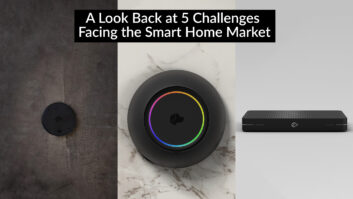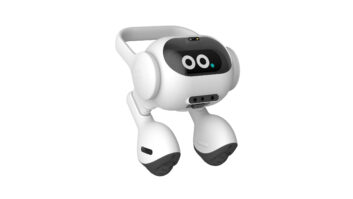Apple’s new HomeKit developer’s environment encourages device makers to connect to iOS for controlling smart home gadgets. That concept pushes, front and center, the smart home hub, which on a consumer level, enables separate smart devices to be integrated into one mobile device interface. It took a New York Times review last month to spark my interest in two of these hubs: SmartThings and Revolv.

While the Apple HomeKit (covered in in this issue by Gordon van Zuiden and by Michael Heiss on our website) could be more than a year away from reality, several smart home hubs are available now.
According to the full Times review, these hubs get devices like light bulbs, speakers, and smart locks to talk to each other. The Times reviewer, Molly Wood, found that both the SmartThings and Revolv hubs were easy to set up to connect a “small set of smart devices” together, as long as she “kept things simple.” The challenge, apparently, is the lack of a single wireless standard across all devices. Both Rovolv and SmartThings can speak to most of these standards, but nothing is guaranteed.
For review purposes, Wood connected the Revolv to a Sonos speaker system, and three Philips Hue light bulbs, but found that the app was limited in its ability to fully control music. Revolv did, however, allow her to set up actions based on her phone’s GPS, so it could turn off the lights when leaving home or back on when coming home. You can also set up actions by time or have one device control another (such as through a motion sensor). Wood reported that geo-sensing worked well, sending her a text when she left her house, confirming that everything was turned off.
The free SmartThings app performed similarly for the reviewer but also came with a starter kit option for setting up an automated home; most of these kits are based on security and monitoring. The one Wood tried was the $300 Know and Control Your Home Kit, which included the main hub, as well as two sensors that can tell when a door or cabinet is opened and also sense vibration and temperature; two sensors that broadcast their location, so you can track keys, children, or dog walkers; a motion sensor; and a smart power outlet.
Wood’s overall experience with the hubs was positive, though she acknowledged “random errors and mysterious failures” in the systems.
Just like how many of you got started in this business, there always will be DIYers out there that will love the experimentation that comes from these sorts of “over-the-counter” options, while others will prefer to spend their money to hire an expert to create a more robust solution. To remain an expert, you will need to know how to position what you do against these quickly evolving entry-level options. Be smart, and get to know the strengths and weaknesses of these hubs personally.







